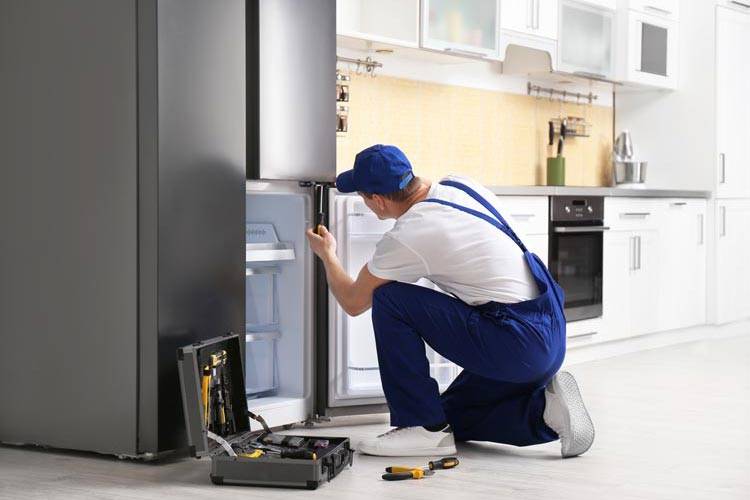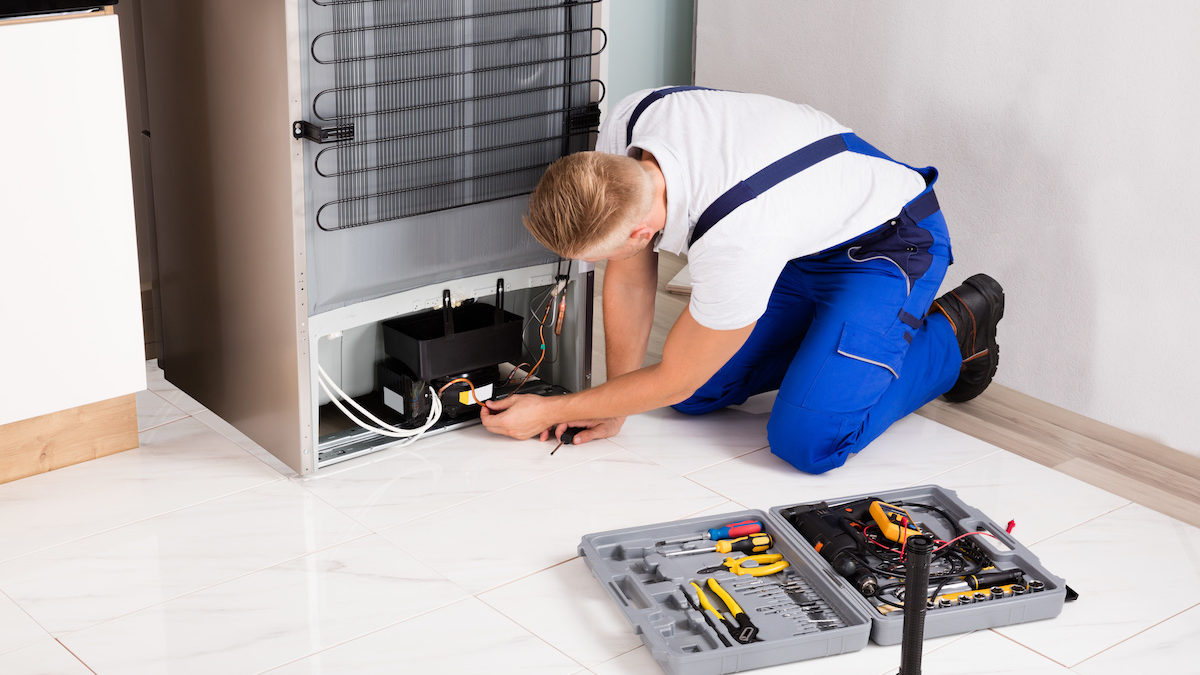The Ultimate Guide to DIY Appliance Repair Strategies
When devices break down, it's very easy to feel overwhelmed. Dependable Refrigeration & Appliance Repair Service SubZero Repair. With the appropriate knowledge and tools, you can deal with usual concerns yourself. From fridges to dishwashing machines, understanding how to fix and fix these devices can conserve you time and cash. Are you ready to discover crucial techniques that will equip you to deal with fixings with confidence? Let's explore the vital locations where DIY abilities can make a significant difference.
Recognizing Common Appliance Problems
When you rely upon your home appliances, it can be frustrating when they all of a sudden quit working or break down. Comprehending typical home appliance issues can help you fix problems efficiently. For instance, if your refrigerator isn't cooling down, examine the temperature level settings or examine the door seal for spaces. A defective washing machine may be as a result of a stopped up drain filter or a damaged belt.
If your oven isn't home heating, malfunctioning components or thermostat problems could be to condemn,. Dishwashing machines typically experience problems with drain, so make certain the filter is tidy and the drain tube isn't kinked.
Likewise, pay attention for unusual audios; they usually suggest mechanical problems. By recognizing these indicators, you can save time and potentially prevent costly repairs. A little expertise goes a long method in preserving your devices, so remain educated to maintain everything running smoothly.
Important Devices for DIY Fixes
Prior to diving into DIY home appliance repairs, it is necessary to collect the right tools to guarantee the procedure goes efficiently. Start with an excellent collection of screwdrivers, consisting of both flathead and Phillips, as they're important for opening up most devices. You'll also want a pair of pliers for clutching and twisting cables or little parts.
Do not forget a multimeter; it aids you test electrical elements and identify concerns effectively. A socket collection comes in handy for loosening or tightening screws, while an energy blade can be valuable for opening up or reducing cords product packaging.
Finally, think about having a flashlight on hand to light up dark rooms inside your devices. With these vital devices, you'll be well-equipped to tackle numerous repairs, saving both time and money. So, collect your equipment and get prepared to roll up your sleeves!
Security First: Safety Measures to Take
Prior to you start any type of appliance repair work, it's important to prioritize safety and security. Make specific you wear personal safety tools, separate the power resource, and keep your workspace organized. These straightforward precautions can aid protect against crashes and ensure a smoother repair service process.

Personal Protective Tools
Security gear is a crucial part of any DIY appliance repair work task. You need to always wear safety goggles to protect your eyes from dust and particles. A sturdy set of gloves will certainly protect your hands from harmful products and sharp edges. Think about using a mask if you're managing chemicals or dirt, guaranteeing you breathe safely while working. Steel-toed boots are also a clever selection, particularly when raising hefty home appliances. Don't fail to remember to wear long sleeves and pants to protect your skin from potential injuries. By focusing on individual protective equipment, you'll significantly minimize the danger of mishaps and injuries. Keep in mind, being prepared with the ideal equipment maintains you secure and concentrated on completing your repair successfully.
Power Source Interference
To ensure a safe do it yourself home appliance fixing, detaching the source of power is essential. Prior to you start any kind of work, you ought to turn or disconnect the appliance off the breaker. This simple step prevents electrical shocks and assurances that you can concentrate on the repair service without bothering with unintentional activation. Constantly ascertain that the home appliance is off by evaluating it with a voltage tester. If you're taking care of bigger appliances, like a washing machine or clothes dryer, ensure to safeguard the power cord and prevent any kind of call with water. Remember, safety and security! When you're positive that the power is separated, you can confidently proceed with your repair services, knowing you've taken the necessary preventative measures to protect on your own.
Workspace Organization
A well-organized work location can make all the difference in your Do it yourself home appliance repair job. Start by removing your work area of mess to avoid crashes and diversions. A tidy room not just boosts effectiveness but likewise maintains you safe while you function on your home appliance repair work.
Step-by-Step Guide for Fridge Repairs
When your fridge begins acting up, it can be frustrating, but tackling the problem yourself can save you time and money. Inspect for common problems like temperature changes or unusual noises. For a noisy fridge, check the fan and confirm it's not obstructed.
If there's water merging within, evaluate the door seals for Get More Information damages or dirt, and tidy them if essential. When you've resolved the concern, plug the fridge back in and check it for a few hours.
Fixing Cleaning Maker Issues
Simply like fridges, washing makers can offer their own collection of challenges, however many issues can be solved with a little bit of troubleshooting. If your device will not begin, examine the power cable and confirm it's plugged in. Next, check the door lock; a defective latch can protect against the cycle from beginning. If you notice unusual noises throughout procedure, it could be as a result of foreign objects stuck in the drum or the drainpipe pump.
Tightening these can frequently solve the trouble. Normal maintenance, like cleaning the filter, can prevent many issues from arising.
Repairing Ovens and stoves
How can you repair common concerns with your stove or cooktop? Begin by inspecting the power supply.
If your oven isn't heating, inspect the temperature setups and confirm the door seals snugly. If it's harmed., a faulty heating aspect can likewise be the culprit; you may require to replace it.
For unequal food preparation, rotate your frying pans and consider utilizing a stove thermometer to confirm precise temperature levels. Finally, if you hear unusual noises or odor gas, shut off the appliance quickly and seek advice from a specialist. By following these actions, you can determine and fix many common oven and range issues efficiently.
Repairing Dishwashing Machines Facilitated
When your dishwashing machine starts breaking down, it can be discouraging, however dealing with typical problems isn't as hard as it appears. You'll learn step-by-step troubleshooting techniques that will certainly assist you pinpoint the issue, along with the essential tools you'll need to take on repair work yourself. Allow's make fixing your dishwashing machine a wind!
Common Dish Washer Concerns
While dish washers are created to make your life less complicated, they can in some cases face usual concerns that leave you feeling annoyed. One regular trouble is bad cleansing performance; this frequently takes place as a result of stopped up spray arms or filthy filters. You could also observe water pooling near the bottom, which can indicate a kinked hose pipe or a faulty drain. If your dish washer's door won't lock, it can be a simple concern with the lock system or door seal. In addition, weird noises can indicate loose components or damaged elements. Ultimately, if you smell something weird, it could be time to look for food debris or a malfunctioning electric motor. Resolving these issues early can conserve you time and hassle down the roadway (Best Sub-Zero repair Service Dependable Refrigeration & Appliance Repair Service).

Detailed Troubleshooting
Prior to diving right into repairs, it's vital to recognize the details issue your dish washer is dealing with. If it's not cleaning up correctly, Start by examining. Inspect the spray arms for obstructions and guarantee they rotate easily. If it's leaking, take a look at door seals and pipes for any damages. For strange noises, listen carefully throughout cycles; foreign objects may be stuck in the filter or impeller. Examine the power supply and door lock if your click now dishwashing machine will not begin. Don't forget to consult your customer manual for fixing suggestions details to your version. By carefully attending to each possible concern, you can identify the issue and take the essential actions to fix it, making your dishwashing machine function fresh once more.
Crucial Repair Service Tools
When repairing your dish washer,Having the right tools at your disposal can make all the distinction. Begin with a screwdriver set, as you'll frequently require both Phillips and flathead alternatives. A multimeter's vital for diagnosing electric problems, while pliers can assist you grasp and control different components. Do not forget a container or towels for any water splashes throughout repair work.
You may likewise want a level to guarantee your dishwasher's properly aligned. With these crucial tools, you'll be fully equipped to deal with any kind of dishwashing machine repair work difficulty that comes your means.
Often Asked Questions
How Do I Identify if a Device Is Worth Repairing?
To establish if a device's worth repairing, consider its age, fixing prices, and existing worth. If repair services exceed half link the replacement price, you could desire to buy a brand-new design rather.
Can I Discover Substitute Parts Locally for My Appliance?
Yes, you can frequently find substitute components in your area for your device. Inspect equipment stores, device repair service stores, or local classifieds. Don't forget to bring the design number to guarantee you get the appropriate component!
What Common Mistakes Should I Prevent When Fixing Appliances?
When repairing home appliances, stay clear of rushing through diagnostics, overlooking security precautions, or using incorrect devices. Do not miss reading handbooks or enjoying tutorials; they offer essential support. Be person and detailed to guarantee effective repairs and prevent additional damages.
The length of time Does a Regular Do It Yourself Home Appliance Repair Service Take?
A common do it yourself home appliance repair service typically takes one to three hours, depending on the complexity. You'll intend to gather your products and tools first, and comply with instructions meticulously to avoid unnecessary delays.
Exist Any Type Of Service Warranties for Do It Yourself Device Repair Works?
When you tackle DIY home appliance repairs, service warranties typically don't cover your work. Some makers might recognize guarantees for components you replace. Always examine your appliance's warranty terms prior to starting any repair work to stay clear of problems.
Prior to diving right into DIY home appliance fixings, it's important to gather the right devices to assure the procedure goes efficiently.Before you begin any type of home appliance repair, it's crucial to prioritize security.To assure a risk-free DIY home appliance repair work, disconnecting the power source is important.A well-organized job area can make all the difference in your DIY appliance repair task. Always check your home appliance's guarantee terms before starting any repair work to stay clear of problems.
Comments on “Top Appliance Concerns Solved by Best Sub-Zero repair Service Dependable Refrigeration & Appliance Repair Service”